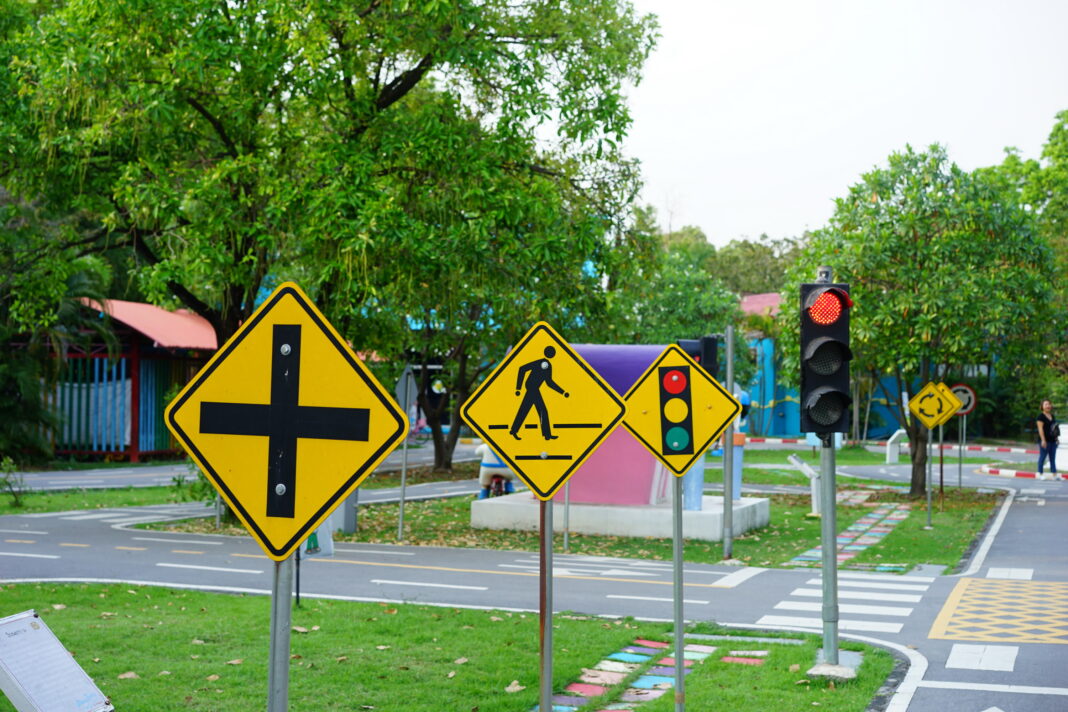Road signs are more than just pieces of metal placed along roads; they are silent guardians of safety, helping drivers, pedestrians, and cyclists navigate traffic with confidence. In Ghana, where road safety remains a major concern, understanding and obeying road signs is not just about avoiding traffic fines, it’s about saving lives.
According to the National Road Safety Authority (NRSA), many accidents on Ghanaian roads stem from negligence and a lack of awareness of traffic signs. Whether you’re a seasoned driver or a learner preparing for your first driving test, here are 10 essential road signs every road user in Ghana must recognize and respect.
1. Stop Sign
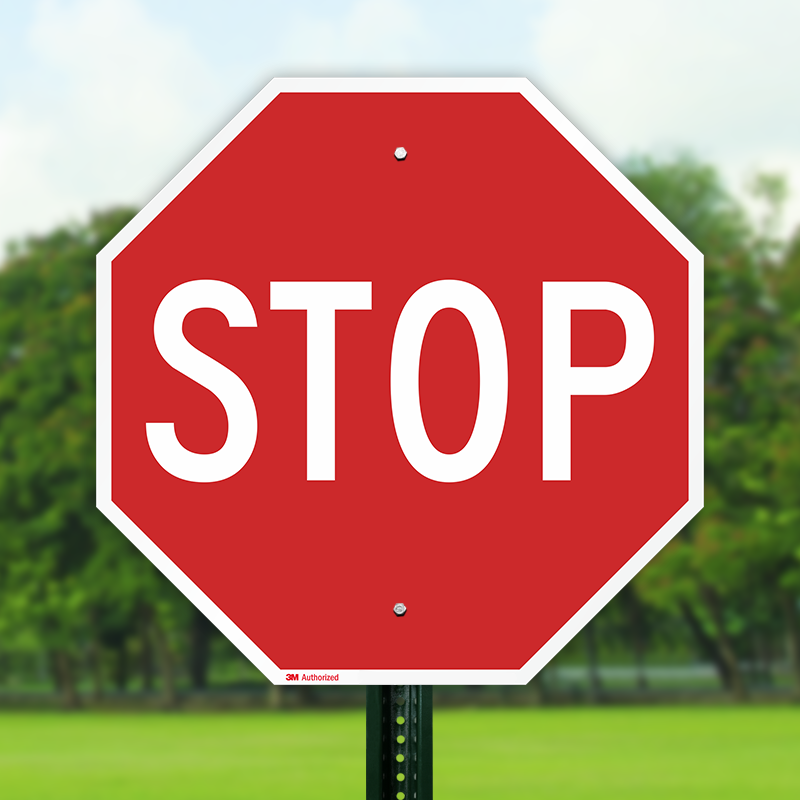
Shape: Octagonal | Color: Red with white letters
The stop sign is one of the most universally recognized signs. It instructs drivers to come to a complete halt at intersections or junctions, allowing them to assess oncoming traffic before proceeding. In Ghana, ignoring this sign can lead to serious accidents, especially at major urban intersections like Kwame Nkrumah Circle or Spintex Road junctions.
2. Speed Limit Sign

Shape: Circular | Color: White background with red border and black numbers
Speed limit signs regulate how fast vehicles can move in certain zones. In Ghana, common limits include 30km/h in school zones or residential areas, and up to 100km/h on highways like the Accra-Kumasi or Tema Motorway. Adhering to these limits helps reduce the severity and frequency of crashes.
3. No Entry Sign
Shape: Circular | Color: Red with a white horizontal line
This sign prohibits vehicles from entering a particular road. It is common in one-way systems across Ghanaian cities. Ignoring a No Entry sign can result in head-on collisions or fines from the Motor Traffic and Transport Department (MTTD).
4. Zebra Crossing Sign
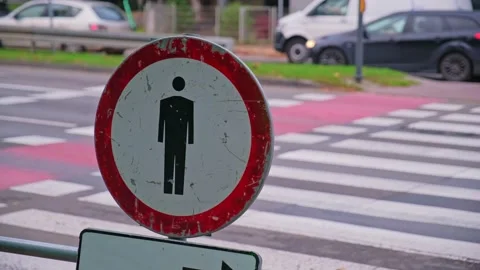
Shape: Rectangular or triangular | Color: Black and white
Zebra crossings are designated pedestrian crossing points. Drivers are legally required to stop when pedestrians are crossing. In areas like the University of Ghana campus or busy areas in Kumasi, respecting zebra crossings is crucial to pedestrian safety.
5. Traffic Light Ahead
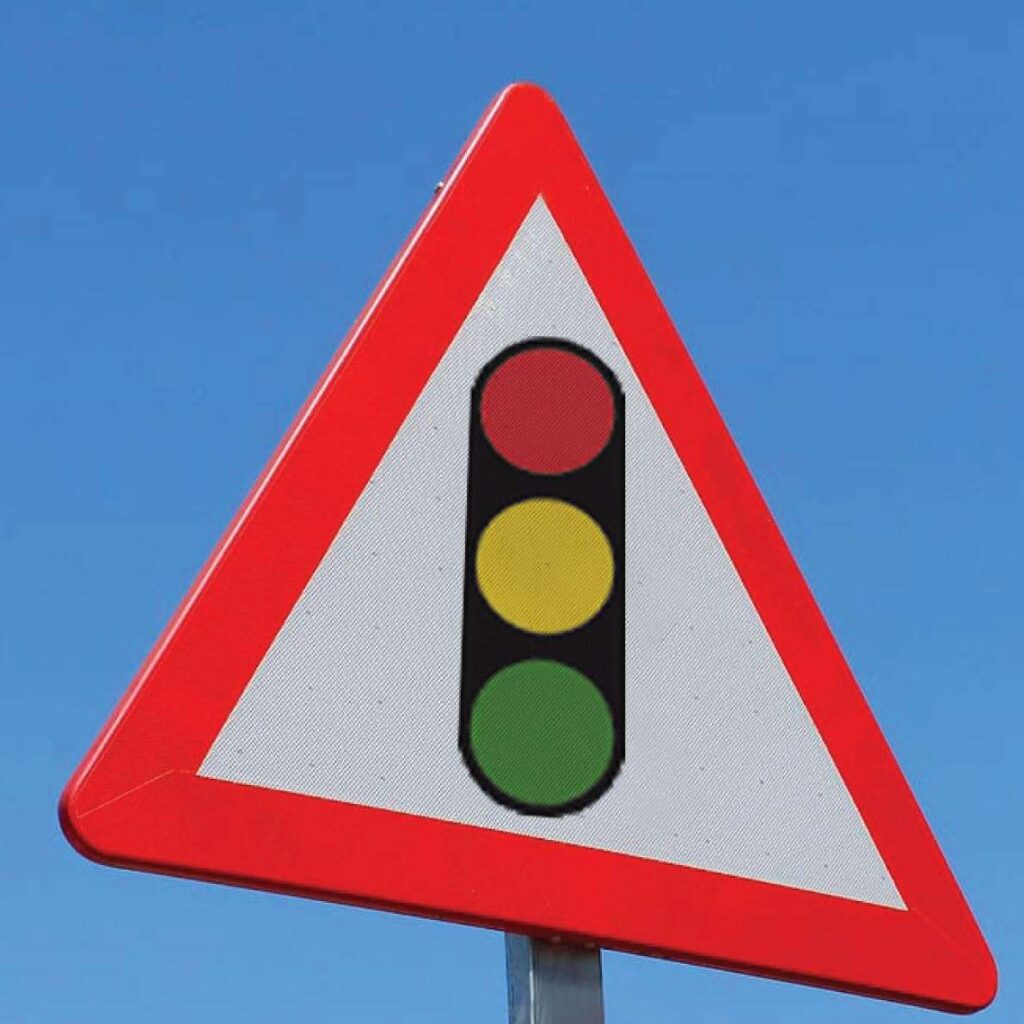
Shape: Triangular | Color: White with a red border
This warning sign alerts drivers that a traffic light is ahead, giving them time to reduce speed and prepare to stop. It’s particularly helpful in areas where the lights are obscured or not functioning properly.
6. Roundabout Sign

Shape: Circular with arrows forming a circle
This sign indicates that a roundabout is ahead and vehicles must yield to traffic coming from the right. Accra’s Tetteh Quarshie and Airport roundabouts are major areas where this sign is critical. Understanding how to navigate roundabouts prevents congestion and collisions.
7. Men at Work / Road Works
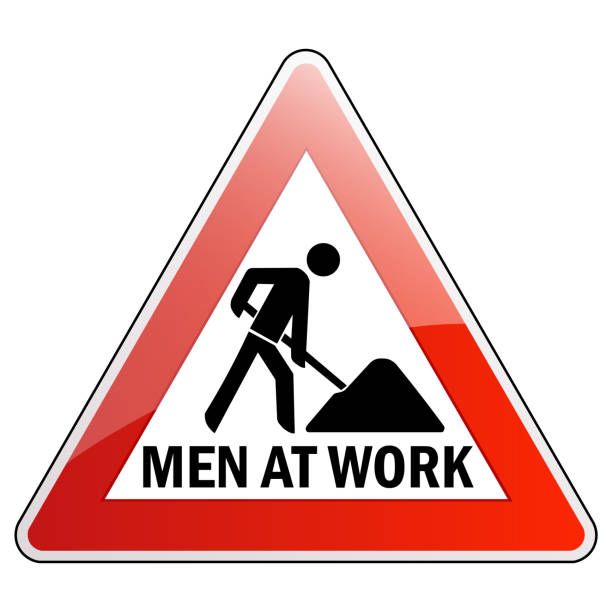
Shape: Triangular | Color: Red border with a pictogram of a worker
With frequent road construction in Ghana, especially in growing suburbs and national highway upgrades, this sign warns drivers to slow down and watch out for workers or heavy equipment.
8. School Zone Ahead
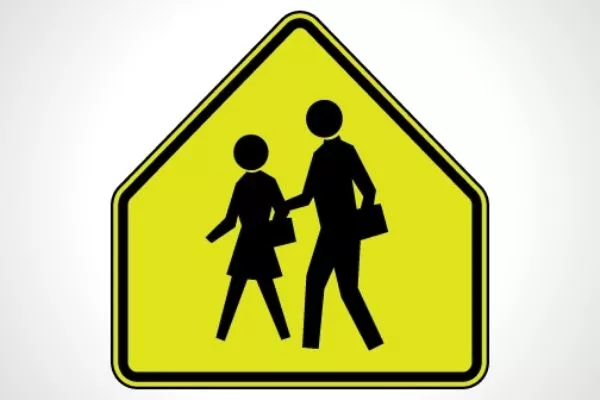
Shape: Triangular | Color: Red border with an image of children
This sign signals drivers to reduce speed and be alert for children crossing the road. Commonly found around basic and senior high schools in residential areas, it reminds drivers to be cautious, especially during school hours.
9. No Parking / No Stopping

Shape: Circular | Color: Red circle with blue background and either a single or double red diagonal line
These signs regulate stopping and parking behavior. They are commonly seen in congested areas like Makola Market or Osu Oxford Street. Violators risk vehicle towing or fines.
10.Yield / Give Way
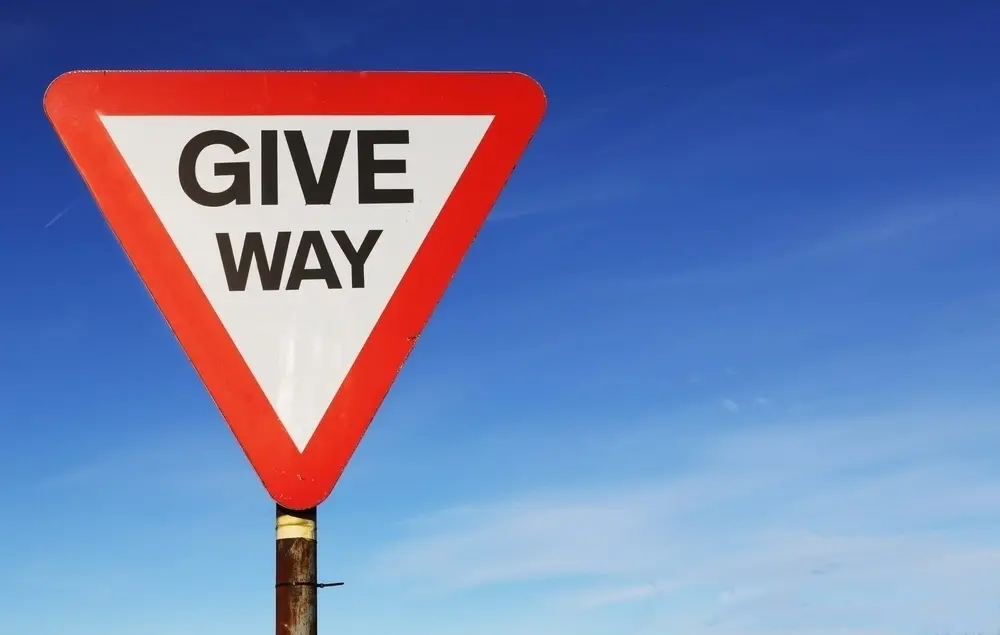
Shape: Inverted triangle | Color: White with red border
This sign tells drivers to slow down and give priority to traffic on the main road. It’s often found at minor intersections, and failure to yield properly can lead to side-impact collisions.
Ghana’s road safety challenges are real. In 2023 alone, over 14,000 road crashes were recorded by the MTTD, with many attributed to driver error and disregard for road signs. Being familiar with and obeying these ten signs could mean the difference between life and death, not just for the driver, but for every road user.



